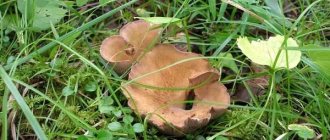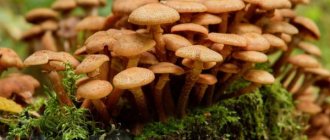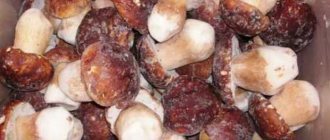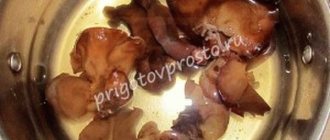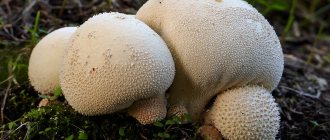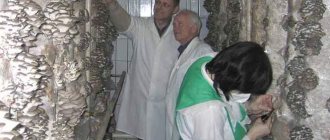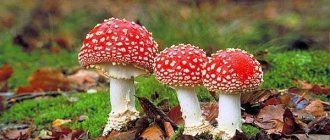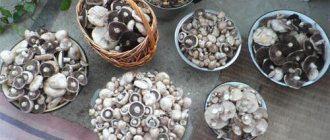There are many wonderful qualities of mushrooms known. For example, thanks to the mold Penicillium notatum, the first natural antibiotic, penicillin, was obtained almost 80 years ago. Humanity owes millions of lives saved to this discovery.
For centuries, traditional medicine has used ordinary (forest) mushrooms, which, in addition to antibacterial activity, also have other healing properties. Official science has been studying them in recent decades. Natural components have been isolated from mushrooms that have a beneficial effect on the human body and help get rid of a variety of health problems.
fly agaric
The cap of the red fly agaric contains muscaruphine, a pigment with antibacterial activity. In addition, the mushroom tincture is used to rub inflamed joints and helps with arthritis, rheumatism, atherosclerosis, and neuralgia. Taking small doses orally normalizes the functioning of the endocrine glands and increases the overall tone of the body.
To prepare the tincture, a three-liter jar is tightly filled with fly agaric caps. The container is sealed and buried in the ground. After 40 days, a liquid with a dark color and a characteristic odor forms in the jar. It is drained, mixed with an equal amount of vodka and stored in the refrigerator.
Source: depositphotos.com
Boletus (white mushroom)
There is an opinion that regular inclusion of porcini mushrooms in the diet can reduce the risk of developing malignant tumors, but this has not yet been confirmed. But boletus mushrooms contain substances that suppress the activity of certain types of pathogenic intestinal microflora and help improve digestion. The alkaloid herzenin contained in these mushrooms alleviates the condition of patients with angina pectoris. Traditional medicine uses boletus to treat tuberculosis and metabolic disorders. Such drugs also help with anemia and loss of strength. External use of porcini mushroom extract is indicated for non-healing ulcers and frostbite.
Regular intake of tincture of boletus caps helps reduce blood viscosity, which is very important for patients with arterial hypertension and angina pectoris. In addition, the drug is used to treat benign neoplasms of the female genital area (fibroids, cysts, etc.).
To prepare the medicine, the caps of porcini mushrooms are crushed, poured into a liter jar up to the shoulders and filled with vodka, left for two weeks in a dark place, then the raw material is squeezed out and the liquid is filtered. The medicine is taken twice a day 30 minutes before meals, diluting a teaspoon of the drug in 50 ml of water.
Source: depositphotos.com
For skin
Cosmetology has also not forgotten about the wonderful kombucha. Kvass made from it refreshes, smoothes and tones the skin. Using the infusion to rinse your hair, you will achieve amazing results. Hair will become strong and shiny.
It is worth noting that mushrooms of this type are of great benefit for skin burns. But for treatment you will need not an infusion, but the mushroom itself: you need to tear off one of the layers and apply it to the burned area. After it dries, it should be replaced with a new one. The procedure must be repeated until the redness goes away.
Veselka vulgaris
Veselka is extremely valued by folk healers. An alcohol tincture prepared from a dried mushroom or a raw gelatinous “egg”, which appears first on the surface of the earth and contains the future fruiting body, treats hypertension, pathologies of the digestive system, inflammatory lesions of the kidneys, liver and pancreas, autoimmune diseases, tumors (both benign, and malignant), cardiovascular diseases. Veselka mucus helps heal wounds, skin cracks and bedsores. Dried mushroom powder has a similar effect. A mass of raw vesels, ground with sugar, is taken for tuberculosis and bronchial asthma.
Veselki are considered an excellent preventive measure that protects against colds. It is enough to keep a sheet of paper with powder made from these mushrooms in the room, and the risk of infecting family members with seasonal infections will be significantly reduced. The raw mass of Veselka has a tonic and antibacterial effect: masks are made from it to improve the health of the facial skin and give it freshness.
Source: depositphotos.com
Dangerous species
In the kingdom of Mushrooms there are also those that pose a serious danger to life. The use of well-known hallucinogenic species of the genus Amanita or Psilocybe leads to the emergence of inadequate states in which a person is not responsible for his actions and can harm himself and others. Ordinary black mold that grows in damp areas, such as the bathroom, is also harmful to health. When such a fungus penetrates the respiratory tract, symptoms of the following diseases appear:
- bronchial asthma;
- meningitis;
- rhinitis;
- pneumonia;
- myocarditis.
Micromycetes also lead to other diseases: dermatosis, diseases of the nails, hair, mouth and genital organs. Parasitic fungi cause mycoses.
Irina Selyutina (Biologist):
Parasitic fungi often cause human diseases. Thus, the Achorion fungus, settling on the scalp, causes a disease called scab. Sometimes it can affect dogs, cats, monkeys and, much less frequently, calves (skin, hair, claws, and nails are affected). The fungus trichophyton, which affects hair, nails and skin, is the causative agent of ringworm. The yeast fungus sidium causes oral disease – thrush. The variety of fungal diseases, unfortunately, as biologists state, is not decreasing, but on the contrary, it is increasing.
No one is protected from them, because the sources of their spread are water, soil, animals and people.
Morel
Since ancient times, morel tincture has been used by folk healers to combat eye diseases. When scientists became interested in these mushrooms, the method received scientific confirmation. A complex of substances was found in morels that not only strengthen the eye muscles, but also help avoid clouding of the lens and the development of cataracts. Today, scientific work is underway to create medicines based on morel extracts.
Source: depositphotos.com
Golden rules of “quiet hunting”
You should follow simple rules that will protect you from poisoning and bring maximum pleasure from the “Silent Hunt”.
- In any case, resolutely throw away unfamiliar mushrooms, even if you have even the slightest doubt, remember that even one questionable fungus can cost you your life.
- For the first time or with little experience, go to the forest with experienced mushroom pickers who are familiar to you personally, use reference books and books.
- Mushroom collection should be carried out in environmentally friendly places, away from cities and large industrial enterprises, at a distance of at least 500 meters from highways.
- You should follow simple rules that will protect you from poisoning and bring maximum pleasure from the “Silent Hunt”.
- In any case, resolutely throw away unfamiliar mushrooms, even if you have even the slightest doubt, remember that even one questionable fungus can cost you your life.
- For the first time or with little experience, go to the forest with experienced mushroom pickers who are familiar to you personally, use reference books and books.
- Mushroom collection should be carried out in environmentally friendly places, away from cities and large industrial enterprises, at a distance of at least 500 meters from highways.
Larch polypore
The components that make up this tree fungus help eliminate toxins and carcinogens from the human body. Polypore preparations are used to treat acute and chronic inflammatory diseases of the respiratory tract, pathologies of the liver and pancreas, tuberculosis and disorders of the gastrointestinal tract.
The mushroom has another remarkable quality: it activates the liver and speeds up metabolism. Therefore, tinder is often used by people trying to lose weight.
Source: depositphotos.com
Chaga
Chaga is a sterile form of one of the types of tree fungi that usually grows on birch trees. In folk medicine it is used as a raw material for the preparation of remedies for gastrointestinal diseases, anemia, pathologies of the nervous system and malignant neoplasms. Water infusions and extracts are made from chaga, since water-soluble pigments that create the specific color of the mushroom have healing properties.
Source: depositphotos.com
Useful properties and contraindications
Chaga is a mushroom with a wide range of beneficial properties. It has anti-inflammatory and hemostatic properties. Decoctions and infusions based on it will help people with tumors of any location. The mushroom is also used as a mild diuretic.
The benefits of this type are significant for joint diseases and decreased immunity. If you have inflammation of the larynx, then daily inhalations for just 5-7 minutes will help get rid of the disease.
It is popularly believed that drinking tea with the addition of mushroom reduces the likelihood of the formation of cancer tumors.
Modern fashionistas have discovered one more property: chaga helps burn fat, thereby helping with weight loss. The use of the mushroom is contraindicated during pregnancy, dysentery, and a tendency to allergic reactions.
Line
The lines contain a substance that acts on the body like cortisone. The tincture of these mushrooms is used in the treatment of rheumatism, arthritis, and osteochondrosis. In addition, the product is used as a rub for bronchitis and neuralgia of various origins.
Stitch preparations cannot be taken orally: they contain a toxin that is similar in effect to the poison of the toadstool.
Source: depositphotos.com
general information
Fungotherapy, or mushroom treatment, is a technique that involves using mushrooms as medicines. The term comes from the Latin “fungus”, which means “mushrooms”.
Throughout history, mushrooms have been treated differently. Some called them children of the gods, others called them the offspring of Satan.
This form of life combines the characteristics of animals and plants, and also has its own, unique properties. Mushrooms contain amino acids, proteins, vitamins, and a special set of microelements.
For the first time, the Chinese healer Wu Xing, who lived more than two thousand years ago, spoke about these representatives of nature.
While practicing medicine, he noticed that if a mushroom element gets into a healing herbal decoction, the effect of such treatment is much higher.
In his work, which has survived to this day, he described the beneficial properties of more than a hundred mushrooms. Soon he had followers who were searching and studying new medicinal forms.
Doctors in Rus' began to use the medicinal properties of mushrooms a little later.
Only a select few were privy to the secrets of fungotherapy, and information about the places where raw materials grew was worth its weight in gold and could become a dowry for a wedding.
The main discovery that firmly connects evidence-based and non-canonical medicine was, of course, penicillin. Alexander Fleming, out of forgetfulness, did not close the Petri dishes with cultures, and discovered after a couple of days that there were no microorganisms left in places where mold grew.
In modern science, this life form appears as a “producer” of antibiotics.
In addition, over the past half century, research has been actively conducted regarding its other beneficial properties.
Entire fungotherapy centers are being created, and antitumor and antirheumatic effects are being thoroughly studied.
Raincoat
Some varieties of raincoats contain calvacic acid, which has high antibacterial and antitumor activity. Based on this substance, the drug calvacin was created, which is successfully used in the treatment of cancer. In addition, raincoat preparations are used to stop bleeding and in the treatment of renal pathologies.
A substance has been isolated from dung mushrooms, related to puffballs, which, when combined with alcohol, causes very unpleasant sensations in humans, similar to signs of poisoning. In folk medicine, raincoats are used to develop an aversion to alcohol in patients.
Other relatives of puffballs, mushrooms of the genus Psilocybe, contain psilocycin, which has a psychotropic effect and is used to treat memory loss and mental disorders.
Source: depositphotos.com
Application in the food industry
The food industry uses about 40 different types of mushrooms from more than 100 edible varieties known to man today.
They are rich in nutrients but have relatively little nutritional value. This is explained by the fact that chitin in the cell walls acts as an obstacle to good digestion in the intestines, and this is what makes mushrooms difficult to digest by the body.
Most edible mushrooms are collected in natural habitats or grown on an industrial scale and eaten after pre-processing.
Oyster mushrooms and champignons are often grown under artificial conditions on a large scale.
Mushroom picking, or mushroom hunting, is a popular activity in many countries.
Main value of mushrooms
In the food industry, mushrooms are used to prepare seasonings and sauces; they are salted, pickled, dried, boiled and fried. They are valued for their gastronomic qualities.
The industrial use of yeast by humans is based on their ability to convert sugar into alcohol and carbon dioxide (it immediately decomposes to H2O and CO2), as well as on their effect on grain and dairy products. Cultural alcoholic fermentation yeasts for beer production are divided into 2 groups:
- Top-fermenting yeast: the optimal temperature for fermentation is about +30℃. At the end of fermentation, they float to the surface and form a foamy cap.
- Bottom fermentation yeast: ferments at a temperature of +7...+8℃ and at the end of fermentation settles to the bottom, forming a dense sediment.
In addition, groups of yeasts also differ in the content of enzymes.
Supersynthetic yeast strains are used for the industrial production of vitamins.
Yeast has found wide application in human life and activities.
Yeasts occupy an important place in the food industry and are used in the production of:
- alcohol (wine, beer, vodka), while with a wide variety of modified yeast strains, producers of expensive wines still use gray botrytis, which causes grape rot;
- fermented milk products (kumys and kefir);
- some types of cheeses with a pungent taste and specific aroma - Roquefort, Camembert;
- bakery products - the ability of mushroom yeast to release carbon dioxide during its life, fermentation, makes the dough porous, so yeast increases the taste of products;
- meat products - the addition of protease of mushroom origin reduces the toughness of meat and increases its taste;
- fruit and berry juices - enzymes are released from mushroom serum that clarify fruit nectars and decompose pectins;
- confectionery products – mushroom malt slows down the crystallization of sugar, allowing you to increase the shelf life of an attractive presentation.
Chanterelle
Cute orange mushrooms are not only a wonderful delicacy. Due to the presence of many useful substances in them, chanterelles are widely used in folk medicine. With their help they treat:
- eye diseases. These mushrooms contain copper, zinc compounds and other trace elements that are necessary to maintain visual acuity and prevent ophthalmic pathologies;
- avitaminosis. In terms of retinol content, chanterelles can successfully compete with orange-colored vegetables and fruits that are traditionally used to replenish vitamin A reserves in the body;
- liver pathologies (including hepatitis C). Tramethonolinic acid and ergosterol were found in chanterelles, which help cope with problems of this kind. The healing remedy is an alcohol tincture, which is prepared from a tablespoon of chopped dried mushrooms and 200 ml of vodka. The product is infused for 10 days in a dark place;
- helminthiasis Chitinmannose, which is part of the mushroom pulp, has an anthelmintic effect and is completely safe for humans.
Source: depositphotos.com
Shiitake
Judging by the data found in ancient written sources, the shiitake mushroom has been used by oriental healers for more than seven centuries. The healing properties of plant materials have been very well studied and are recognized by official medicine not only in China and Japan, but also in many European countries. Shiitake preparations are used in the treatment of:
- malignant and benign neoplasms;
- impotence;
- hypertension;
- diseases of the cardiovascular system;
- diabetes mellitus;
- viral and colds;
- erosive lesions of the digestive tract;
- fungal infections;
- poorly healing wounds;
- inflammatory processes of any origin.
For therapeutic use, fresh or dried mushrooms are infused with alcohol, cognac, vodka, sweet wine, olive or linseed oil. Sometimes water decoctions or infusions are used. Shiitake is quite edible: in Eastern countries it is regularly included in the menu raw, fried, pickled or boiled.
Source: depositphotos.com
Carefully!
Can boletus mushrooms be dangerous? All mushrooms (ceps are no exception) are the most powerful natural sorbents. That is why it is prohibited to collect them near busy highways, factories and other polluted places. This can lead to disastrous consequences.
Eating porcini mushrooms for children under 14 years of age is strictly prohibited. Since the child’s digestive system is not able to digest the chitinous shell, boletus can cause very serious poisoning.
Reishi
In China, this mushroom is considered one of the best remedies for prolonging life, maintaining physical and mental performance, and having virtually no side effects. Reishi medicines are used to treat heart and vascular diseases, allergies and mental illnesses. In addition, the mushroom contains substances with antitumor activity.
It has been found that shiitake and reishi mushrooms are beneficial when used together, as they enhance each other’s healing effects.
Source: depositphotos.com
